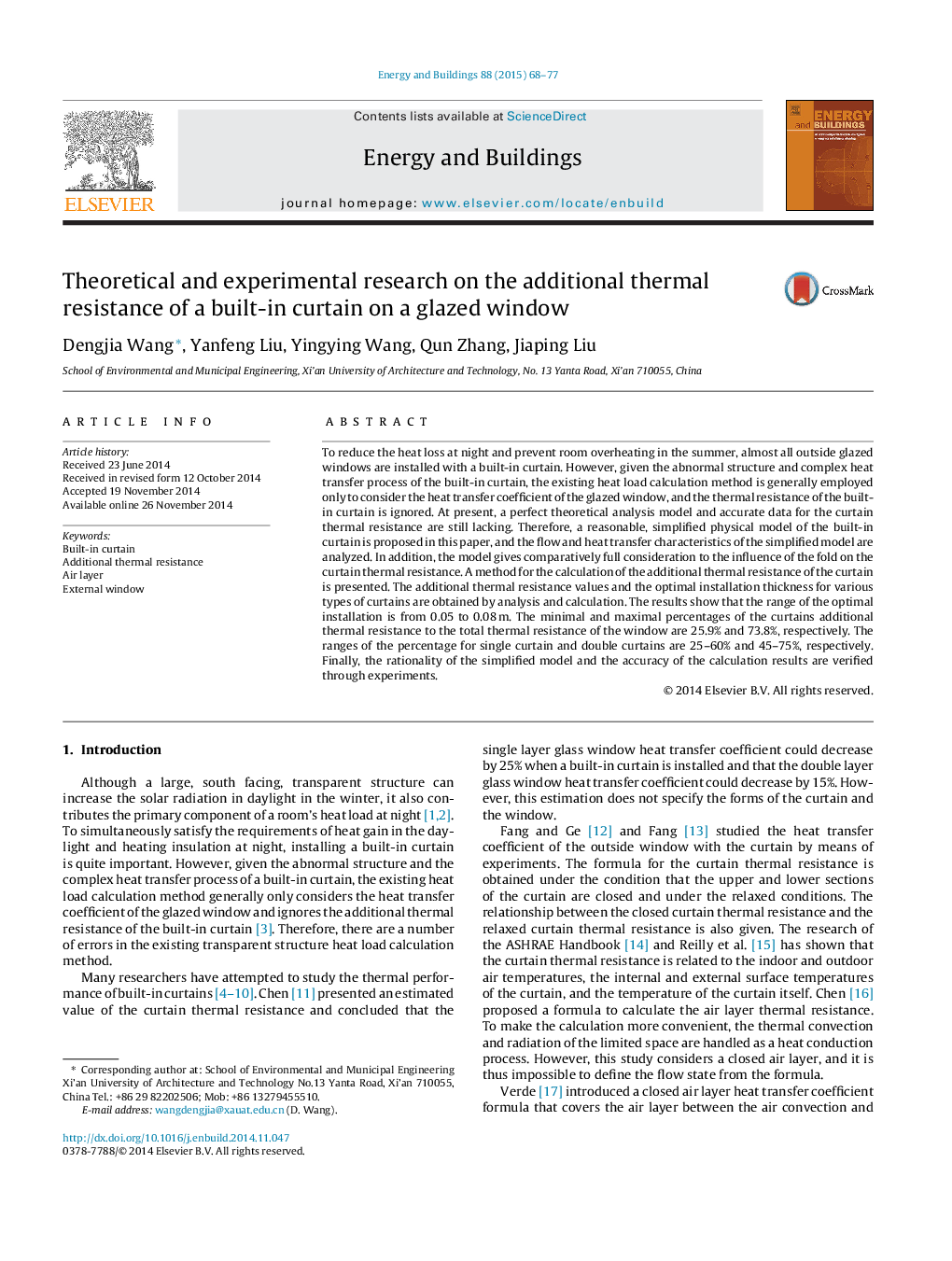| Article ID | Journal | Published Year | Pages | File Type |
|---|---|---|---|---|
| 6732309 | Energy and Buildings | 2015 | 10 Pages |
Abstract
To reduce the heat loss at night and prevent room overheating in the summer, almost all outside glazed windows are installed with a built-in curtain. However, given the abnormal structure and complex heat transfer process of the built-in curtain, the existing heat load calculation method is generally employed only to consider the heat transfer coefficient of the glazed window, and the thermal resistance of the built-in curtain is ignored. At present, a perfect theoretical analysis model and accurate data for the curtain thermal resistance are still lacking. Therefore, a reasonable, simplified physical model of the built-in curtain is proposed in this paper, and the flow and heat transfer characteristics of the simplified model are analyzed. In addition, the model gives comparatively full consideration to the influence of the fold on the curtain thermal resistance. A method for the calculation of the additional thermal resistance of the curtain is presented. The additional thermal resistance values and the optimal installation thickness for various types of curtains are obtained by analysis and calculation. The results show that the range of the optimal installation is from 0.05 to 0.08Â m. The minimal and maximal percentages of the curtains additional thermal resistance to the total thermal resistance of the window are 25.9% and 73.8%, respectively. The ranges of the percentage for single curtain and double curtains are 25-60% and 45-75%, respectively. Finally, the rationality of the simplified model and the accuracy of the calculation results are verified through experiments.
Keywords
Related Topics
Physical Sciences and Engineering
Energy
Renewable Energy, Sustainability and the Environment
Authors
Dengjia Wang, Yanfeng Liu, Yingying Wang, Qun Zhang, Jiaping Liu,
